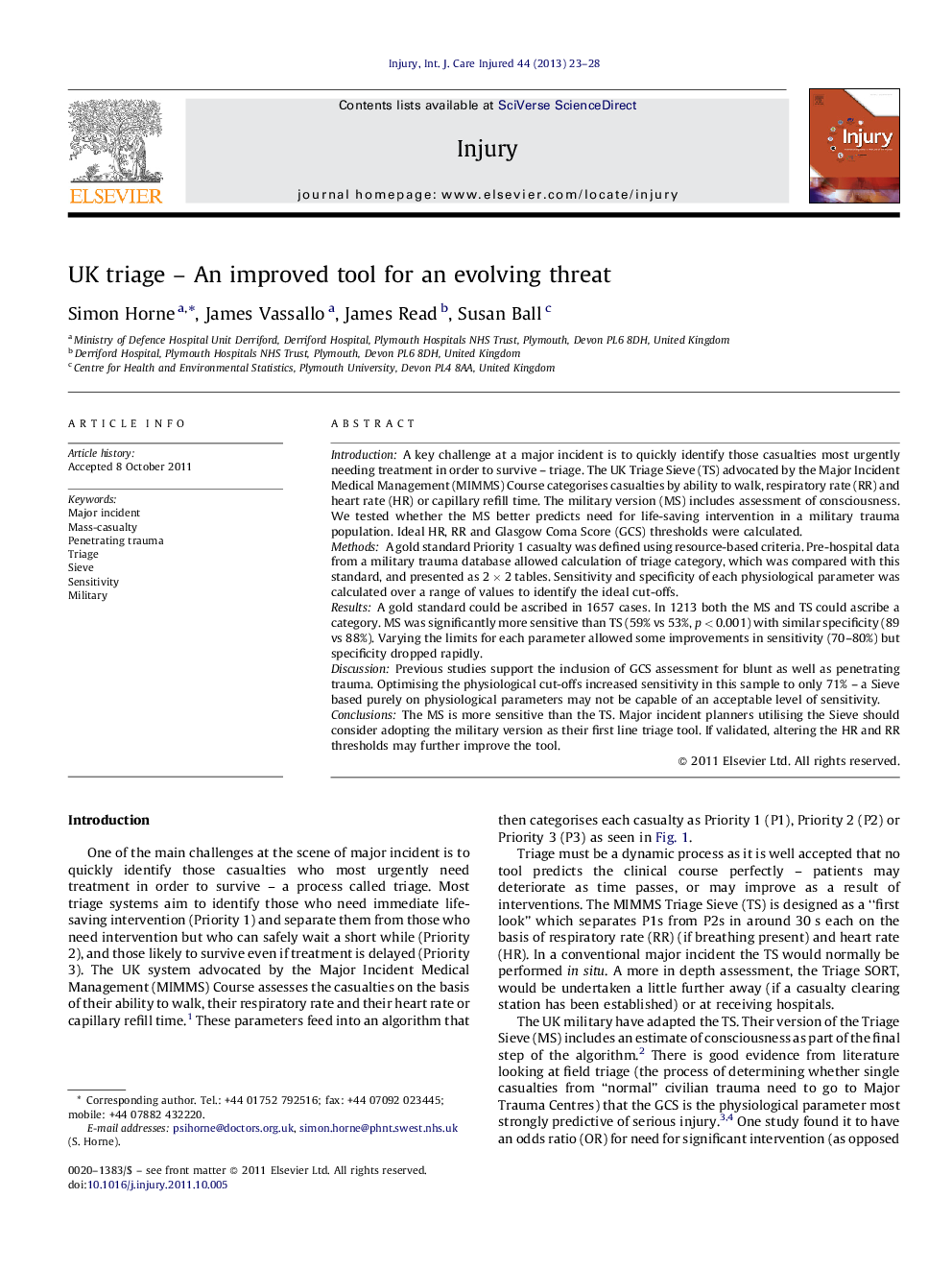| Article ID | Journal | Published Year | Pages | File Type |
|---|---|---|---|---|
| 6084380 | Injury | 2013 | 6 Pages |
IntroductionA key challenge at a major incident is to quickly identify those casualties most urgently needing treatment in order to survive - triage. The UK Triage Sieve (TS) advocated by the Major Incident Medical Management (MIMMS) Course categorises casualties by ability to walk, respiratory rate (RR) and heart rate (HR) or capillary refill time. The military version (MS) includes assessment of consciousness. We tested whether the MS better predicts need for life-saving intervention in a military trauma population. Ideal HR, RR and Glasgow Coma Score (GCS) thresholds were calculated.MethodsA gold standard Priority 1 casualty was defined using resource-based criteria. Pre-hospital data from a military trauma database allowed calculation of triage category, which was compared with this standard, and presented as 2 Ã 2 tables. Sensitivity and specificity of each physiological parameter was calculated over a range of values to identify the ideal cut-offs.ResultsA gold standard could be ascribed in 1657 cases. In 1213 both the MS and TS could ascribe a category. MS was significantly more sensitive than TS (59% vs 53%, p < 0.001) with similar specificity (89 vs 88%). Varying the limits for each parameter allowed some improvements in sensitivity (70-80%) but specificity dropped rapidly.DiscussionPrevious studies support the inclusion of GCS assessment for blunt as well as penetrating trauma. Optimising the physiological cut-offs increased sensitivity in this sample to only 71% - a Sieve based purely on physiological parameters may not be capable of an acceptable level of sensitivity.ConclusionsThe MS is more sensitive than the TS. Major incident planners utilising the Sieve should consider adopting the military version as their first line triage tool. If validated, altering the HR and RR thresholds may further improve the tool.
